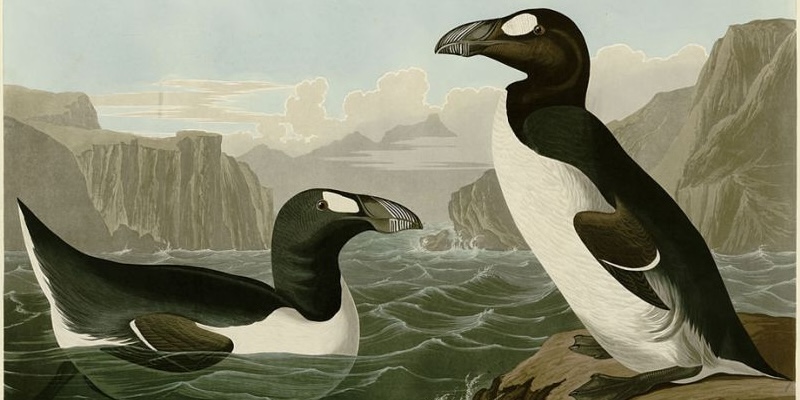Gísli Pálsson at Literary Hub:
 In 1858, the great auk (Pinguinus impennis) was reported to be in serious decline. William Proctor, keeper of the bird collection at Durham University, had traveled to Iceland in 1833 and 1837, partly in order to seek out great auks, but reported that sightings were now rare in Iceland and that he had not seen any of the birds.
In 1858, the great auk (Pinguinus impennis) was reported to be in serious decline. William Proctor, keeper of the bird collection at Durham University, had traveled to Iceland in 1833 and 1837, partly in order to seek out great auks, but reported that sightings were now rare in Iceland and that he had not seen any of the birds.
Later, student William Milner inquired about great auks on his travels to Iceland and was informed that none had been seen recently, though two had been caught two years earlier, in 1844. Milner’s account of his visit gave rise to a strong suspicion that the species was not only rare but vanishing.
Naturalist John Wolley took a keen interest in discussions of rare birds, and he resolved to go to Iceland with the same intention as his friends. He invited Alfred Newton, then making a name for himself as a zoologist at Cambridge University, to join him. Wolley and Newton met for the first time in Cambridge one October day in 1851, although they had corresponded for several years.
More here.
